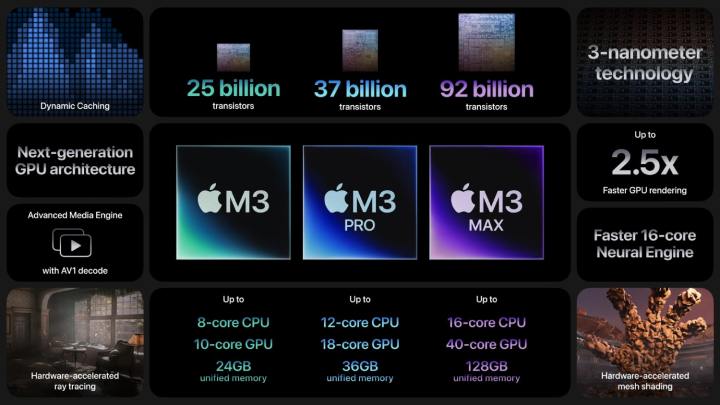Mac desktops are having a bit of an identity crisis.
Before the release of Apple’s M3 chipsets, the Mac Studio with the M2 Ultra was the fastest Mac around. But the M3 Max changed everything, allowing the MacBook Pro to rival the Mac Studio in performance by offering a more advanced chipset design. Unless Apple plans to discontinue the Mac Studio, it needs to bring out a meaningful update — sooner rather than later.
No change is needed on the outside

I ended up choosing the MacBook Pro 16 over the Mac Studio, not because I didn’t love Apple’s compact desktop. Far from it. Rather, I made a complicated decision built around the dual-use aspect of the MacBook Pro and how it fits best within my rather complicated computing workflow.
Every now and then, I wish I’d stuck with the Mac Studio. The MacBook Pro takes up a lot more room on my desk, and I thought its fan noise would bother me less than it does. The Mac Studio was almost perfectly quiet even when pushed hard, something I can’t say for the MacBook Pro. But in the end, the versality and power of the MacBook Pro more than makes up for the difference. It’s why so many creative professionals are choosing to upgrade directly to the MacBook Pro rather than a Mac Studio or Mac Pro.
A massive change is needed on the inside

But when I made my choice, the M3 Max was the more attractive chipset. Looking at some benchmarks, we can see that the MacBook Pro 16 with the 16-core CPU/40-core GPU M3 Max matches or exceeds the Mac Studio with the 24-core CPU/60-core GPU M2 Ultra in several of our tests. The most impressive result is in the GPU portion of Cinebench 2024, where the M3 Max was almost twice as fast. Even the M2 Ultra with 76 GPU cores couldn’t keep up.
The M2 Ultra maintains a fair margin in the PugetBench Premiere Pro version 23.4 benchmark, thanks to the combination of brute force afforded by so many cores and how Premiere Pro utilizes them. It’s reasonable to assume, though, that Adobe will leverage the M3 Max’s various GPU enhancements to increase its performance, which could even the playing field.
That hasn’t happened yet. The MacBook Pro 16 M3 Max scored 8,046 in PugetBench version 24.1, running in Premiere Pro 2024, while the M2 Ultra 24/76 scored around 9,500. But as Adobe optimizes Premiere Pro, including adding AI processing that can leverage the M3 Max’s more advanced Neural Engine, the M2 Ultra could lose some of its advantage.
If you’re a hardcore creator who demands the highest possible performance in apps like Premiere Pro, the Mac Studio with the M2 Ultra remains a viable option. But just about anyone else, including gamers, will want to look to the future and choose the M3 Max.
| Apple Mac Studio (M2 Ultra 24/60) |
Apple MacBook Pro 16 (M3 Max 16/40) |
Apple MacBook Pro 14 (M2 Max 12/38) |
|
| Handbrake (seconds) |
53 | 55 | 85 |
| Cinebench 2024 Single (higher is better) |
120 | 140 | 121 |
| Cinebench 2024 Multi (higher is better) |
1,870 | 1,667 | 1,032 |
| Cinebench 2024 GPU (higher is better |
7,727 | 13,146 | 5,592 |
| Pugetbench Premiere Pro 23.4 (higher is better) |
978 | 885 | N/A |
Will an M3 Ultra Mac Studio ever arrive?

The presumption has been that Apple will introduce an M3 Ultra version of the Mac Studio. The Ultra series chipsets are basically two Max chipsets fused together using a technology called UltraFusion. According to Apple, the technology basically doubles performance, not only of the CPU and GPU, but also of memory, which runs at 800GB/s.
Benchmarks show that the performance isn’t necessarily doubled in real-world use, but it’s close enough. The M2 Ultra provides a tremendous boost over the M2 Max. Given the performance of the M3 Max, an M3 Ultra would be a blisteringly fast chipset that would blow these benchmarks out of the water.
However, some questions have popped up around whether the M3 Max incorporates the UltraFusion technology. If it doesn’t, then that raises questions about the future of not only the Mac Studio, but also of the Mac Pro, Apple’s answer to professional users who demand upgradeability. I suspect Apple has a solution in mind, whether the M3 Max includes UltraFusion or the next high-end chipset will use some other fabrication method.
Either way, the longer Apple waits to bring out the M3 Ultra, the longer these high-end Mac desktops will feel completely out of their element.
Editors’ Recommendations

